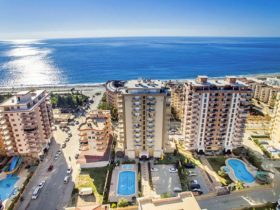Having spread its lands in Central Europe, the country Poland is proud of its cultural heritage, its natural attractions, its folklore and culinary diversity, its people, who survived a lot of black milestones in its history.
The attractions of Poland
Modern Warsaw is known for its historical center, which was reconstructed after World War II in ancient plans and drawings of the 17-18th century. Here you can enjoy the picturesque architecture and visit many cafes, restaurants and antique stores. To embrace the capital of Poland with one glance, you need to climb the observation deck of the Palace of Culture and Science. This building was presented by Poland Stalin in 1953, as a symbol of Polish-Soviet friendship.
Another famous Polish city, Krakow, can please many attractions: the building of the town hall and the area of the historical center, the colorful Jewish district of Kazimaz and Vavelki Castle, where you can see a delightful collection of tapestries. Near Krakow there is a monastery complex Clear Gura, where the miraculous icon “The Virgin in the mourning” found shelter.
The city of Wroclaw became famous for its 100 bridges and the cathedral on the island of Tumsky, and the city of Gdansk – the Basilica of St. Mary. Next to it is the Hel peninsula, the Kashursky lakes and Teutonic Malbork (Gniew) castles (Gniew). The country of Poland offers a unique attraction: the salt shaft Velika, which has a length of 135 meters, and in which you can see salt figures, chandeliers, chapel.
National cuisine of Poland
Polish cuisine has a special taste. Her typical ingredients are dill, marjoran, fennel, mushrooms and sour cream, which are added to soups, sauces and boiled meat. Soups are an important part of the kitchen, usually fat and thick. Unlike them, borscht is liquid and are served with meat pies. SZARLOTKA is served for dessert – apple pie, Packi – donuts with jelly, makowiec – poppy cake. Even the country Poland loves dumplings with cabbage, buckwheat and herring.
Weather in Poland
The climate of Poland is unstable. Here rainy periods are often replaced by dry and clear. The most unstable climate of the Baltic coast. January, when the temperature can fall to minus 5, is considered the coldest month. July, when the temperature rises to plus 23, is considered the warmest. In the Tatras, where the country Poland accepts its winter guests, a little colder, but this cannot interfere with a comfortable rest.

